- Like
- SHARE
- Digg
- Del
- Tumblr
- VKontakte
- Flattr
- Buffer
- Love This
- Save
- Odnoklassniki
- Meneame
- Blogger
- Amazon
- Yahoo Mail
- Gmail
- AOL
- Newsvine
- HackerNews
- Evernote
- MySpace
- Mail.ru
- Viadeo
- Line
- Comments
- Yummly
- SMS
- Viber
- Telegram
- JOIN
- Skype
- Facebook Messenger
- Kakao
- LiveJournal
- Yammer
- Edgar
- Fintel
- Mix
- Instapaper
- Copy Link
⏱️ Introduction
 You’ve probably heard of high-intensity interval training, a hot trend among both athletes and amateur fitness folks alike.
You’ve probably heard of high-intensity interval training, a hot trend among both athletes and amateur fitness folks alike.
High-intensity interval training (HIIT) is defined by short bursts of intense exercise broken up by short periods of downtime for recovery.
There are several key benefits of HIIT, including accelerated fat loss, improved cardio performance, and lean muscle development.
HIIT can offer something for just about everyone, whether you’re looking for improved body composition (i.e., more muscle and less fat) or boosted athleticism.
Interval training is a great way to work through a fitness plateau, lose body fat while maintaining muscle mass, and add variety to your training.
It’s not necessary to perform much, if any, steady-state aerobic “cardio” exercise if your goal is simply to lose fat while maintaining or increasing muscle mass.
Just look at speed and power athletes who have been using interval training for decades to improve their performance and maintain their leanness in minimal time, and you’ll quickly see the powerful effects of this type of training.
❓ Are you ready to dive into the world of interval training? Great! Let’s begin…
? What is High Intensity Interval Training?
 Interval training is a type of exercise that involves short bursts of high-intensity work immediately followed by lower intensity rest, repeated for a set period of time or number of repetitions.
Interval training is a type of exercise that involves short bursts of high-intensity work immediately followed by lower intensity rest, repeated for a set period of time or number of repetitions.
This type of training is typically performed by running or cycling, but can also include many other forms of exercise like swimming, rope jumping, and resistance training.
Speed and power athletes (track sprinters, sprint swimmers, soccer forwards, olympic weightlifters, gymnasts, etc.) obtain extraordinary body compositions by doing primarily interval training and resistance training.
Interval training is believed to have first been “invented” in 1930’s Europe as a means of improving endurance and speed in track athletes, and is attributed to Germany’s Freiburg University coaching staff.
One of the first landmark studies that showed interval training to be far superior to steady-state cardio training for improving body composition was done in 1994.1
In that study they found that interval training helped participants lose nine times more body fat than aerobic steady-state training (such as jogging). To drive home the point even further, the interval program in the study was done for only 15 weeks while the aerobic program lasted 20 weeks, showcasing interval training as having potentially even greater results than steady-state cardio.
The main reason researches believed that the intervals resulted in more fat loss in less time is that intervals increased the “after burn”, or the number of calories burned from fat throughout the recovery period, and that the interval group had an improvement in their body’s ability to use fat for fuel, which resulted in greater fat loss.
The workout used in the 1994 study initially consisted of 10 sprints of 15 seconds each, and increased to 15 sprints of 30 seconds, initially starting out at 60 percent of maximum and gradually working up to 85 percent of maximum. Recovery times were long enough to allow the heart rate to return to 120-130 beats per minute.
❤️ Steady-State Cardio vs Interval Training
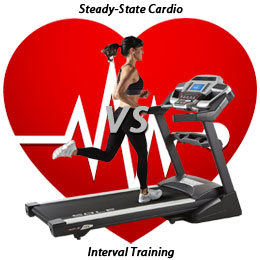
Everybody always wants to know what type of cardio they should be doing and how much of it.
It’s never easy to discern what’s true and what isn’t when every person and fitness magazine is telling you something different.
I want to let you know that there is no magical formula for cardio, and it isn’t rocket science. But I want to help clear up some of the confusion.
The first thing we need to go over is the difference between steady-state (aerobic) cardio and interval (anaerobic) cardio training.
What you see most people doing is what we call steady-state cardio.
You know, where the people are on a treadmill or elliptical for what seems like hours.
They barely break a sweat and don’t really breathe very hard.
That’s steady-state cardio.
It essentially means you have reached a point during your cardio where you almost feel comfortable. You’re breathing harder than normal but it’s not too intense.
A simple way to judge where you’re at is to go by the “broken conversation” rule.
If you can talk to somebody else in broken sentences, but not having to breathe between every word, then you’re at the right level of intensity.
Now the other type of cardio we have is interval cardio training, aka anaerobic cardio.
This is what you typically see track-and-field athletes doing.
Short bursts of very high intensity sprint work. Essentially a work/sprint period followed by a rest/recovery period.
The idea is to work extremely hard for a brief period of time and then take a recovery period.
The work to rest ratio generally starts around one to three. So if you did one minute of sprinting you would follow that with three minutes of rest and recovery. Then you would repeat that for a number of sets.
Once you get in better shape you may go to a 2:1 or a 1:1 work to rest ratio. If you’re really fit you may even have a shorter rest period than work period.
The idea is to get your heart rate up as much as possible, then recover and try to bring it back down.
This allows you to work extremely hard as you have a longer time to recover between intervals.
The Pros and Cons of Steady-State Cardio and Interval Training
Now there are pros and cons to both types of cardio and I will list them out below for you.
Steady-state cardio, also known as aerobic conditioning, is typically performed on a treadmill or elliptical.
A good length to shoot for is 40-60 minutes. It’s all about burning a lot of calories, so the longer you perform steady-state cardio the more calories you’re going to burn overall.
How steady-state cardio is performed:
- Typically 40-60 minutes in length.
- Performed at one pace on a treadmill, elliptical, or bike.
- Go by the “broken conversation” rule.
Steady-state cardio pros:
- Lots of calories burned.
- Easier to perform than interval work.
Steady-state cardio cons:
- It takes a lot of time, typically almost an hour per session.
- It wastes muscle (which is the last thing we want to do).
- Your body adapts very quickly to this type of cardio.
Interval cardio is best performed on a bike or elliptical. It can also be done on a treadmill or a rower.
It can be performed anywhere between 20-30 minutes max. This gives you enough time to torch some serious calories, but not overdoing it as the intensity is very high.
How interval cardio training is performed:
- Typically 20-30 minutes in length.
- Performed at all-out work periods followed by slow and easy rest/recovery periods.
- The idea is the get a burning sensation in your legs and lungs. If you don’t feel this you’re probably not working hard enough during the intervals or you need to make it harder by increasing the length of the work period, resistance, or incline.
Interval cardio training pros:
- Lots of calories burned relative to the amount of time you perform it.
- Takes only twenty to thirty minutes at the high end to receive the benefits.
- It offers more “bang for your buck” than steady-state.
- No muscle wasting like steady-state.
- Your body has a hard time adjusting to it because you can continue to make the intervals harder through various methods such as increased resistance, speed, incline, time performed.
- It improves both your anaerobic and aerobic conditioning.
Interval cardio training cons:
- It’s very difficult if you’re new to it.
- You have to really push yourself every workout
What Form of Cardio Exercise You Choose Depends on Your Goals
Ok so now you’re asking yourself “This is all good and great, but what do I do?”
Well it depends on your goals.
If you really need to lose some weight and are new to cardio, then steady-state cardio may be a good start for you.
I would start with three days of easy steady-state work such as walking on a treadmill then eventually build yourself up.
You could do something like this for steady-state if you’re new to cardio:
- Week 1 – 3 x 30 minute walks on the treadmill
- Week 2 – 4 x 30 minute walks on the treadmill
- Week 3 – 3 x 45 minute walks not the treadmill
- Week 4 – 4 x 45 minute walks on the treadmill
Once you get past this you can increase the incline, increase the amount of time, or even increase your speed a little bit to make it more difficult.
You could work yourself up to six days per week of steady-state cardio.
If you’ve already been performing cardio for a while now (i.e. more than a few weeks) then you should be able to get into interval work.
Interval work won’t drop the numbers as fast off the scale, because it doesn’t burn quite as many calories up front, but it’s going to preserve the most amount of muscle which is what you want in the end.
You could do something like this for interval cardio training starting out:
- Week 1 – 8x of 20 seconds of a sprint/fast jog followed by 1 minute of walking/rest.
- Week 2 – 10x of 20 seconds of a sprint/fast jog followed by 1 minute of walking/rest.
- Week 3 – 12x of 20 seconds of a sprint/fast jog followed by 1 minute of walking/rest.
- Week 4 – 8x of 30 seconds of a sprint/fast jog followed by 1 minute of walking/rest.
Now a sprint can be done on an elliptical or bike, it doesn’t have to be on a treadmill. Any time that you increase your speed or intensity for a brief amount of time is considered a sprint.
Again, once you feel more comfortable you can increase the speed that you run at or the incline to make it harder. Or if you’re on an elliptical or bike you can increase the resistance during the sprint part of the interval.
Some of My Favorite Cardio Workouts
Equipment used: Elliptical
I like to start with a five minute warm-up. Once I’m ready to go I like to crank the resistance up to 10 and go on an all out sprint. I’ll do this for twenty seconds then start my recovery period. I’ll do this by bringing the resistance all the way back down and going as slow as I want.
The workout looks like this:
0:00 – 5:00 – Warmup
5:00 – 5:20 – Sprint at resistance of 10 (180+ strides per minute)
5:20 – 6:00 – Rest at resistance of 1 (<130 strides per minute)
6:00 – 6:20 – Sprint at a resistance of 10 (180+ strides per minute)
6:20 – 7:00 – Rest at resistance of 1 (<130 strides per minute)
And so on for a total of about 20 intervals total.
25:00 – 30:00 – Cool-down
That’s my overall favorite cardio workout. It’s a short enough sprint to get through no matter what kind of shape you’re in. But it can also adjusted to be difficult for even the most fit individuals.
Some other options for work to rest ratios:
0:30 : 0:30
0:20 : 0:40
0:45 | 0:45
1:00 | 2:00
There are so many ways you can do intervals. Start with a 1:3 work-to-rest ratio and then work your way up to a 1:1. Once you get to that point you should be well on your way to seeing some serious results.
What you shouldn’t do.
One thing you have to be careful of when you’re first starting out is not going overboard with cardiovascular training.
If you’re not used to it, you really need to make sure you’re taking a true progression to build up your endurance and stamina.
I see it happen too many times where people who haven’t run in years decide to start running every single day.
You know what happens to them?
- Muscle strains
- Stress fractures
- Overuse injuries
All things that can be avoided with the proper progression of cardio.
If you’re doing absolutely no cardio right now you can start with just a couple of days a week.
Work your way from walking, to jogging, to interval sprints.
You also want to work your way up from the amount of times you’re doing cardio.
Start off with one day of walking, then two, three, and so on. Once you’re walking most of the days of the week for 30+ minutes then you can start jogging. Cut down the time again because jogging is harder than walking. Build yourself back up.
This is how we make sure you progress and prevent injuries.
These are obviously just samples of what you can do, but it’s a start. There are tons of ways to adjust your cardio workouts to make sure you keep progressing.
Hopefully you now understand a little more about the types of cardio and what you should be doing.
Bringing it All Together
- Interval cardio training is more bang-for-your-buck than steady-state cardio.
- Steady-state is best if you’re brand new to cardio.
- Interval cardio training is best in the long run if you want to help shape yourself into a lean body.
- It doesn’t matter where you start, just get going. Even if it’s only a couple of days a week for ten minutes a session, it’s still better than nothing.
- Make sure you progressively increase your workout difficulty. Don’t go all out right off the bat.
? Benefits of High Intensity Interval Training

I want to be more efficient with my body fat burn. I want to be more efficient with my time. I want to give everything in my exercise and leave it on the floor.
High Intensity Interval Training or HiiT, increases one’s metabolism, burns body fat, not muscle, and it is not necessary to perform this routine for an hour.
During HiiT routines you are performing anaerobic exercise (recruitment of fast twitch muscle fibers), where your body will burn fat to provide energy.
? High Intensity Interval Training Improves Efficiency, Period…
- HIIT boosts metabolic rate after exercise
- HIIT burns more calories in less time
- HIIT improves oxygen consumption
- HIIT can be performed anywhere
- HIIT is great for heart health
- HIIT requires no equipment
- HIIT is challenging but fun
- HIIT preserves your gains
? Five Great Reasons to H.I.I.T. Your Workout
 In today’s fast-paced society, every second counts. Few of us have the time to devote to long workouts that produce little results, especially when there’s another option.
In today’s fast-paced society, every second counts. Few of us have the time to devote to long workouts that produce little results, especially when there’s another option.
High Intensity Interval Training, otherwise known as H.I.I.T., can be added to most traditional workouts and lets you get more bang from your workout buck.
By introducing periods of high-intensity exercise to your daily workout, followed by short periods of rest, you can increase your results in less time.
Still not convinced? Here are 5 Reasons to H.I.I.T. your workout.
5 Reasons to H.I.I.T. Your Workout-
1. You’re Short on Time
One of the greatest benefits of H.I.I.T. workouts is that they can allow you to squeeze a heart-pumping, fat-burning workout into a short period of time. Research shows that just 15 minutes of high-intensity training can burn more calories than twice that amount of time on a treadmill. This makes H.I.I.T. perfect for a lunch break workout.
2. You Want to Burn Fat and Calories FAST
H.I.I.T. workouts improve aerobic capacity and send your body’s repair cycle into overdrive, boosting metabolism and burning more calories. A faster metabolism means that you’ll continue to burn fat and calories, even after your workout!
3. You Don’t Want to Spend Money on Expensive Gym Equipment
Forget about expensive gym memberships and fancy equipment. H.I.I.T. workouts can easily be incorporated into any fitness program and can be done practically anywhere. From high knees, to jumping lunges, to burpees, to 50 yard sprints, finding a simple way to increase heart rate fast is as easy as 1-2-3.
4. You Get Bored Easily
A bored mind can spell doom to a fitness program. Luckily, H.I.I.T. workouts provide a constant change of scenery and pace. Your heart will be pumping and your muscles will be burning, but your mind won’t be bored… and that means you’ll be much more likely to stay motivated.
5. You Want to Boost Your Metabolism
H.I.I.T. workouts are more effective at burning fat than longer cardiovascular workouts because they rev up the metabolism. H.I.I.T. workouts have also been shown to improve insulin resistance and cause muscular adaptations that result in the muscle’s ability to better eliminate fat. Better results in less time? Does it get any better?
⚙️ How Do I Structure My Interval Training?
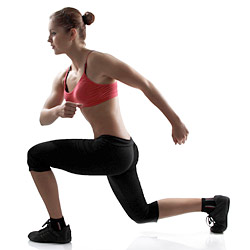
There are many different ways to structure your interval training, and no particular work-to-rest ratio is necessarily the best for every person.
Things to consider are your level of fitness, current body composition goals, and experience performing interval training.
One important thing to keep in mind is that the “work” portion of the interval needs to be very challenging and intense to illicit the optimal physiological effects, and the “rest” portion of the interval needs to be easy or moderate to allow for enough recovery to maintain intensity throughout all subsequent repetitions.
Think of a wave graph where the difference between the crest (work phase of the interval) and trough (rest phase of the interval) should be significantly different. The tendency, and what you should strive to avoid when doing intervals, is to have the crest and the trough come too close together and become more like continuous training.
Below are the main parameters to work with when designing an interval workout, and it is usually best to only change one parameter at a time as you progress:
- How long you do each interval (200 meters, 30 seconds, etc.)
- How fast you perform each interval (80% of full speed, 12 miles per hour, etc.)
- How long and what fashion you rest/recover between each interval (30 seconds walking, 120 beats per minute jogging, etc.)
- How many repetitions your are going to complete or total duration of workout
It’s always best to begin an interval training session with a light warm-up of around five minutes where you progressively increase the intensity of the exercise(s) you are going to perform for the training bout. Further, sessions should be concluded with a cool-down and stretching to help the body clear lactic acid and facilitate recovery.
Here are three example interval training workouts for somebody of moderate fitness level who has experience with this style of training:
Example #1 – Track Sprint Workout
- Sprint 400 meters, rest 4 minutes
- Sprint 300 meters, rest 3 minutes
- Sprint 200 meters, rest 2 minutes
- Sprint 100 meters
Example #2 – Pool Swimming Workout
- Swim as fast as you can 10-15 lengths, with 30-60 seconds rest between each length
Example #3 – Cycle/Ergometer Workout
- 5-10 repetitions cycling as fast as you can for 60 seconds at 75-85% max heart rate, resting between each interval for as long as it takes your heart rate to come down to 55-65 max heart rate.
The Bottom Line
Interval training has been shown over and over to be a “shortcut” to optimal body composition for those who are willing to put in the short but intense effort. Use the tips in this guide and sprinkle it into your own workout routine a couple times per week and see how it benefits you!
References:
1. http://www.xiser.com/assets/impact_of_exercise_intensity.pdf
⚠️ The Do’s and Don’ts of High-Intensity Interval Training
There is a right way and a wrong way to go about high-intensity interval training. Done the wrong way, HIIT can result in injury and other downgrades in performance such as inadequate recovery.
If you want to reap the awesome benefits mentioned above, you need to make sure you’re going about HIIT properly.
Keep reading to find out our key tips on how to get the most out of HIIT while avoiding the most common pitfalls.
DON’T Focus On a Single Muscle Group
 One of the biggest mistakes people make when performing HIIT exercises is focusing on a single muscle group. For example, slamming your way through a set of biceps curls followed by a rapid-fire triceps set.
One of the biggest mistakes people make when performing HIIT exercises is focusing on a single muscle group. For example, slamming your way through a set of biceps curls followed by a rapid-fire triceps set.
This is not what HIIT is for. HIIT works best with full body exercises that accelerate your heart rate (for example, jump roping, bodyweight or lightweight squats, etc).
There’s nothing wrong with spending some extra time on a particular muscle group, but if you are isolating muscle groups (like in the biceps/triceps example above), you need to do your sets in a slower and more controlled way than real HIIT requires.
Additionally, you will want to mix up your full-body exercises to achieve a proper HIIT workout. Work in exercises that challenge your body in different ways. Some great choices to mix into HIIT include sprints, jump rope, mountain climbers, and rowing (on a Concept 2 or similar rowing machine).
Making a note of your exercises on the calendar will also help you keep track of what you have been working on and help you find balance.
DON’T Excessively Limit Your Nutrition
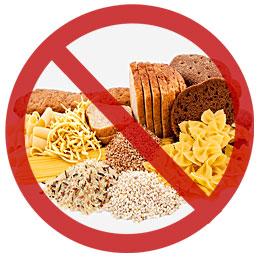 HIIT workouts require loads of energy to complete, which is why you shouldn’t limit your nutrition.
HIIT workouts require loads of energy to complete, which is why you shouldn’t limit your nutrition.
Individuals who are in a hurry to lose weight may think they need to cut way, way back on their caloric intake, but unfortunately this results in lower energy levels.
A better option is to reconsider the types of food you are eating and make better choices that provide enough nutrition to support your energy levels.
Reduce the amount of high-sodium, high-sugar and processed foods in your diet and replace them with healthier choices such as lean protein, fresh vegetables, fresh fruits, and whole grains.
A preworkout meal is also a great idea. An hour before you head out to the gym for a session of HIIT exercises, have a healthy snack or a small meal.
Be sure to include both protein and carbohydrates.
This will keep your energy levels up during your intense workout to come while providing your body with the nutrition it needs to build lean muscle and burn fat.
DO Focus on Form
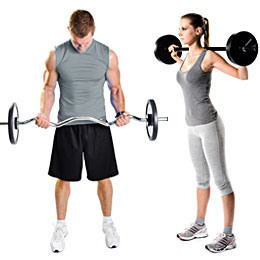 Sadly, many people jump into overly-intense HIIT before they are ready and get injured. Strains, sprains, development of muscle imbalances, and exacerbation of posture problems are all too common among beginners doing HIIT.
Sadly, many people jump into overly-intense HIIT before they are ready and get injured. Strains, sprains, development of muscle imbalances, and exacerbation of posture problems are all too common among beginners doing HIIT.
Never sacrifice your form in the name of intensity! Make sure you completely understand the proper way to execute each exercise before throwing yourself into it.
If you are too tired to do the exercise with good form, STOP! Rest until you can continue with good form.
You will not be able to build muscle and lose fat if your body goes down for the count due to badly-performed exercises. Yes, it’s possible to do permanent damage that requires surgery and physical therapy during HIIT drills.
Even if you don’t do permanent damage, you’ll lose valuable time that you could otherwise devote toward your fitness as you recover from pesky, avoidable injuries. It’s just not worth the risk. If you are in doubt about your form, ask a trainer to help you out!
DO Consume Adequate Protein
 One of the most important nutrients for bodybuilders, HIIT enthusiasts, and other athletes alike is protein.
One of the most important nutrients for bodybuilders, HIIT enthusiasts, and other athletes alike is protein.
Protein is a key player in a number of bodily functions, one of which is the repair of damaged and torn muscle fibers. When you perform HIIT exercises, small tears will develop in your muscles.
This is essentially what creates that distinct ‘soreness’ that so many people experience after lifting weights.
The good news is that you can encourage faster recovery and more efficient muscle building by consuming more protein in your diet.
Whether it’s from meat, fish, soy, or whey protein shakes, most people could afford to bump up their daily protein intake.
Although you will hear different protein guidelines here and there, a simple guideline that is also easy to follow is 1 gram of protein for every pound of lean body mass.
Lean body mass is the weight of your body minus the fat. So a 160 pound person with 20% body fat would have about 128 pounds of lean mass, and therefore would do well to shoot for about 128 grams of protein per day (especially on workout days).
Further Reading:
DO Rest and Recover
 It may sound counterintuitive, but rest and recovery are absolutely essential to getting good results from your workouts. Of course, you want to achieve amazing results as quickly and efficiently as possible.
It may sound counterintuitive, but rest and recovery are absolutely essential to getting good results from your workouts. Of course, you want to achieve amazing results as quickly and efficiently as possible.
Just know that HIIT requires adequate downtime between workouts in order for the body to fully recover and rebuild. Otherwise, you’re just continually tearing yourself down without allowing time for your body to rebuild.
Especially if you’re a beginner, HIIT every single day would NOT be a good idea. A good rule of thumb is to rest 48 hours between intense full-body HIIT workouts. You can still perform some basic cardio workouts on your ‘off’ days, but you should avoid lifting heavy weights and performing other HIIT workouts.
If you’re just mixing in some HIIT drills here and there into other weight training or cardio workouts, you can get away with a higher workload in terms of the other exercises you’re doing. No matter what workout style you choose, it’s best practice to take one day per week completely off your fitness pursuits.
Gentle activities such as walking and stretching are excellent for these recovery days, just avoid anything too heavy-duty.
The Bottom Line
When properly utilized, high-intensity interval training is an amazing tool to get in great shape. We hope this DO and DON’T list is a helpful starting place to point you in the right direction.
To get the most of out of this fantastic form of training, you will of course also want to be persistent and consistent with it.
Like anything, consistency is key for achieving results. With continued and correct use of HIIT, it’s possible to achieve new level of fitness that is beyond the reach of traditional methods of exercise.
See Also:
? Why HIIT Improves Your Cardio Training
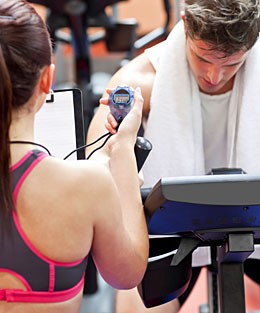
For years, the fitness industry’s staple workout is the steady-state cardio training, which many athletes, sports buffs and casual exercisers favor.
The training worked fine for them. However, in recent years there has been a steady rise in the growth and interest in high intensity interval training or HIIT.
Although the traditional fitness gym regimen is not likely to go away, HIIT is getting more popular among athletes and other fitness enthusiasts, for the immediate results it gives them.
Here are more reasons why there is more focus on HIIT than traditional cardio exercises.
Different Types, Different Approaches
The workouts in a steady state cardio are simple. Usually, the activity is done at a steady but manageable rate although challenge is still built into the activity. The aim is to increase the heart rate to 120 up to 150 beats per minute, with the workout lasting for 20 minutes.
The workouts in HIIT on the other hand, are complex. The most typical HIIT training protocols are usually performed at 90 to 100% of the exerciser’s maximum capacity for a very short time, which can be from 8 seconds to two minutes, with a 3-minute rest period. The cycle is usually repeated for 4 or more times.
When you do steady state cardio, you are doing aerobic exercises as the activities need oxygen, with the fuel sourced from fat stored in the body. HIIT is anaerobic. The workout is not too dependent on oxygen and the body’s stored carbohydrates provide the fuel. When doing HIIT exercises, you will be breathing harder but you will be burning more fat.
Cardiovascular Fitness
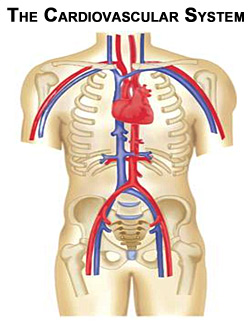 The former belief is that cardiovascular fitness will improve by increasing the bulk of exercise on aerobic machine such as treadmill, cycle, elliptical or stair stepper.
The former belief is that cardiovascular fitness will improve by increasing the bulk of exercise on aerobic machine such as treadmill, cycle, elliptical or stair stepper.
Traditional fitness gym training is usually termed as continuous endurance training. The depth of research on HIIT reveals that provides more effective effects on several physiological factors in less time due to continuous exercise at higher volume.
Conventionally, healthy adults are recommended to have a minimum of 30 minutes of physical activity with moderate intensity. This means that the exerciser works hard to break a sweat but can still conduct a conversation. The recommendation is to do the exercise routine five times a week or alternate it with an additional 20 minutes of vigorous activity three times a week.
Examples of common aerobic exercises include swimming, cross-country skiing, rowing, cycling, stair climbing, running and walking.
Strength training should be included at least twice a week. This will focus on all the major muscle groups in the body, using a combination of 8 to 10 different types of exercises, with 8 to 12 repetitions for each one. It can be performed using weight machines, medicine balls, free weights, resistance bands or body weight.
On the other hand, HIIT is more popular because it is flexible and can be modified depending on the person’s physical condition and fitness level.
The HIIT workouts can be included in any type of exercise mode like group exercise, elliptical cross training, swimming, walking or cycling. It gives the same fitness benefits you will get from continuous endurance workouts.
The difference it that you’ll gain the benefits in a shorter period because you’ll be burning more calories even post-exercise. You have a 2-hour period after the HIIT exercises wherein the body will be restoring itself to the pre-exercise stage. During this period, the body continues to use energy.
Length of Workout
 When you do typical aerobic exercises or the continuous endurance exercises, the usual recommendation is to do the activities about five times a week, with more vigorous activities three times a week.
When you do typical aerobic exercises or the continuous endurance exercises, the usual recommendation is to do the activities about five times a week, with more vigorous activities three times a week.
In general, while the workout duration tends to be marginally shorter, athletic and strength gains from HIIT are parallel to gains made through longer and more time consuming exercise protocols, as evidenced in a latest research published in the Journal of Applied Physiology.
This is also a great to accommodate for a perceived lack of time by novice exercisers, as HIIT workouts cut down by a fair margin, the time needed to complete a full body fitness workout.
A HIIT workout, which is anaerobic, is more exhaustive and intense, therefore the recovery period is longer. For beginners, it is recommended to start with doing HIIT workout once a week. It can be combined with the continuous endurance exercises, though, then gradually increase the frequency but spread it within the entire week.
Salient Features
 In order to better understand the two workout modes, it is best to see their salient features. When you do steady cardio or the traditional fitness program, here are some of the top features:
In order to better understand the two workout modes, it is best to see their salient features. When you do steady cardio or the traditional fitness program, here are some of the top features:
- Faster recovery
- Still maintain muscle mass
- Will still burn calories
- Increase cardiovascular endurance and develop aerobic fitness
- Will likely stick with the program
With HIIT, the major features are:
- Lose fat faster
- Take longer to recover
- Have shorter exercise time
- Increase your metabolism
- Push yourself almost to your limit
Why the HIIT method is Growing Rapidly
 Given the salient features of the two workout regimen, you can see that both have plus and minus points.
Given the salient features of the two workout regimen, you can see that both have plus and minus points.
The steady cardio workout is continuous. It will take longer to see results. Many people still stick to the program because it does not tax their strength too much.
It is also possible to include HIIT activities within the continuous cardio workout for better results.
However, many athletes and fitness enthusiasts like the challenge HIIT presents to them. They like to test their strength. They enjoy the immediate results they gain after only a short period of exercise. They are not bored with the variety of exercises, compared to the repetitive routine presented by a steady state cardio training.
HIIT is popular because it’s a time saver. Most HIIT workouts last only for a few minutes, to a maximum of 30 minutes. For busy people, this is a big plus because they only need to spend a few minutes to achieve the results they need. It is flexible and adaptable and can be performed anywhere, not only inside a gym.
You do not need too many gym equipment and can do HIIT workouts inside or outside your home. Because of the amount of time the body takes to recover from the high intensity workout, it continues to burn fat up to 24 hours after the workout. Aside from giving your cardiovascular system a good workout, HIIT helps to maintain muscle mass, which occurs through anaerobic exercise.
The main goal of any exercise program is to improve the skeletal muscle and the metabolic and cardiovascular functions of the body. The continuous aerobic exercises has shown good results over the years. But HIIT shows more improvements in a shorter period, which is one of the reasons for its popularity. However, both exercise programs are good, and combining the two will give you a very clear win-win situation.
?️ Five HIIT Moves You Can Do Anywhere
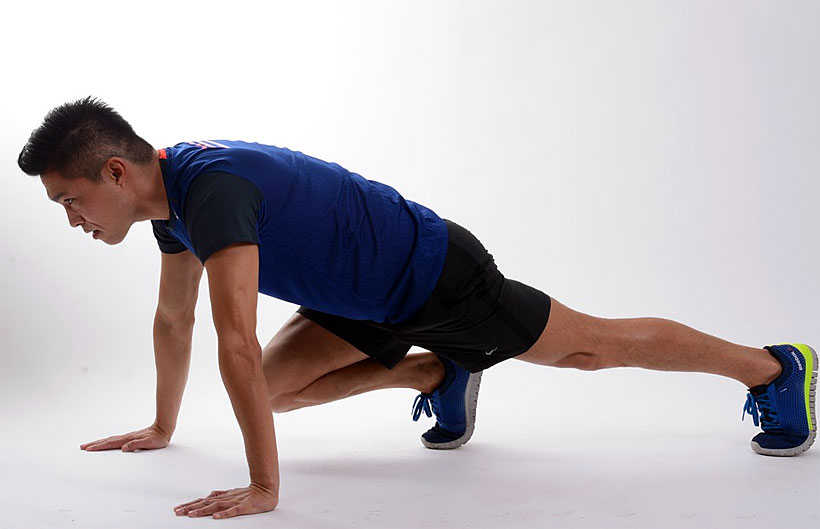 There are plenty of HIIT moves you can do literally anywhere. No more making excuses that you can’t get to the gym or that the weather is bad and you can’t be bothered to trek out after work.
There are plenty of HIIT moves you can do literally anywhere. No more making excuses that you can’t get to the gym or that the weather is bad and you can’t be bothered to trek out after work.
If you’re serious about your fitness, HIIT (or high-intensity interval training) is a great way to supercharge your cardio fitness. As the name suggests, a HIIT workout involves intense intervals of different moves or exercises.
Popular moves you may already know include burpees or push-ups. The idea is to do as many reps of each move in a set space of time followed by a short rest. Workouts are often put together in circuits and will often work different areas of the body.
The best HIIT workouts are varied and don’t require any equipment. This makes it very easy to get an intense cardio workout and a full body strength workout in a short space of time. If you’re looking for a varied and energetic workout to help keep your fitness on track when you can’t get to the gym, look no further.
Aim to do as many reps of each exercise as possible in 30 seconds, then rest for 15 seconds. Rotate through the entire list of exercises and then rest for 1 minute. Repeat the entire set 5 times if you’re a beginner and challenge yourself to more sets if you are feeling stronger. The beginner’s workout should take no more than 25 minutes to complete.
#1. Spider plank
If you want to sculpt your core, the plank is a great place to start, but some people don’t like the stationary nature of a traditional plank. To counteract the boredom, why not upgrade to spider planks? Start in a regular plank position with your arms below your shoulders, your bum tucked in and your core straight. Bring your right knee up towards your left elbow and then return to a central position. Then do the same with your left knee, this time bringing it towards your right elbow. Repeat as many times as you can and try to keep your movements controlled and steady.
#2. Burpees
This essential HIIT exercise is an essential move in many HIIT boxing workout routines. Start by standing with your legs hip-width apart. Make sure there is enough space behind you to extend your legs out. Drop down in a low squat, plant your hands on the floor and kick your feet out so that your legs are extended behind you. To make it harder, lower down into a low push up and then raise yourself up again. When you reach the top of your push up, jump your legs forward so they are just in front of your hands. Jump straight in the air with as much power as you can muster. Repeat as many times as you can, focussing on control and form over speed.
#3. Leg lower
At this point in the workout, you’ll likely be grateful for a lie-down. Lay on the floor with your arms by your side and your legs together. Bending at the hip, lift your legs straight up in the air to a 90° angle. Lower them down slowly, focussing on keeping your back flat. Make sure you keep breathing through this exercise.
#4. Curtsy Lunge
Back on your feet again, you’re going to stand with your legs hip-width apart. Still facing forward, step back and to the left with your right foot. Lower down into a squat until your knee almost touches the floor. Raise yourself back up and bring your foot back to the center. Repeat the same move on the other side, stepping back to to the right with your left foot. As with all of these moves, the focus should be on stability over speed.
#5. Push-ups
As you may have guessed, the next move focuses on your upper body and core. Back on the floor, keep your feet together and hold yourself up using your arms. Keep your arms shoulder-width apart. Moving them closer to the center of your body will make this exercise harder as you work different muscles. Drop to your knees if you want to make your push up easier. Do as many as you can in your 30-second interval.
? Conclusion
HIIT can offer something for just about everyone, whether you’re looking for improved body composition (i.e., more muscle and less fat) or boosted athleticism.
There are several key benefits of HIIT, including accelerated fat loss, improved cardio performance, and lean muscle development.
Hopefully this guide has spurred your interest in interval training. If you’re not already utilizing HIIT, we highly recommend you add it to your training program.
? You won’t be disappointed!

